Filters
Date Range
Types
Contacts
Categories
Tag Types
Tag Schemes
|

This is a geochemical data set from the reanalysis of 44 rock samples collected between 1966 and 1970, and 107 sediment samples collected in 1966 and 1967. These samples were collected by the U.S. Geological Survey for a study investigating the mineral resources of the Idaho Primitive Area (Cater et al., 1973). The samples are from the Lower Middle Fork of the Salmon River, including the tributaries of Big Creek, Camas Creek, Brush Creek, Wilson Creek, Waterfall Creek, Ship Island Creek, Reese Creek, Stoddard Creek, and Papoose Creek. The overall objective of this study is to characterize the regional impact of legacy mining for the Frank Church River of No Return Wilderness Area. Mary P. Rossillon (1981) explored...
Categories: Data;
Tags: Annie Creek,
Atomic absorption analysis,
Atomic emission spectroscopy,
Beaver Creek,
Big Creek, All tags...
Big Ramey Creek,
Biotite,
Biotite-feldspar,
Biotite-muscovite,
Botha Creek,
Brush Creek,
Cabin Creek,
Calc-silicate rock,
Camas Creek,
Camp Creek,
Canyon Creek,
Cave Creek,
Challis intrusive,
Challis volcanic group,
Chemical analysis,
Chlorite-biotite,
Cliff Creek,
Coin Creek,
Copper Creek,
Coxey Creek,
Crooked Creek,
Diorite,
Eagan Creek,
Fawn Creek,
GGGSC,
Geochemistry,
Geochemistry,
Geology,
Geology, Geophysics, and Geochemistry Science Center,
Glacial deposit,
Gneiss,
Granite,
Granodiorite,
Hand Creek,
Holy Terror Creek,
Hornblende-biotite,
Idaho,
Idaho Primitive Area,
Jackass Creek,
Lake Creek,
Lapilli tuff,
Latite,
Lehmi group,
Lewis Creek,
Little Marble Creek,
Little Ramey Creek,
Logan Creek,
Lower Middle Fork Salmon,
MRP,
Mass spectroscopy,
Metasedimentary rock,
Middle Fork Salmon River,
Middle Fork terraces,
Migmatite,
Mineral Resources Program,
Monumental Creek,
Moore Creek,
Mule Creek,
Neoproterozoic intrusive,
Paint Creek,
Papoose Creek,
Parker Mountain,
Phyllite,
Porphyry,
Quartzite,
Quartzose,
Rainbow Creek,
Reese Creek,
Rhyolite,
Rush Creek,
Schistose,
Seafoam,
Sedimentology,
Ship Island Creek,
Smith Creek,
Snowslide Creek,
Stoddard Creek,
Sunnyside tuff,
Syenite,
Telephone Creek,
Threemile Creek,
Thunder Mountain,
Timm Creek,
Trap Creek,
USGS Science Data Catalog (SDC),
United States,
Waterfall Creek,
Wildhorse Creek,
Wilson Creek,
Windermere supergroup,
Woodtick Creek,
Yellowjacket,
Yellowjacket Creek, Fewer tags
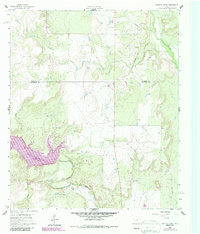
USGS Historical Quadrangle in GeoPDF.
Tags: 7.5 x 7.5 minute,
Crooked Creek,
Downloadable Data,
GeoPDF,
GeoTIFF, All tags...
Historical Topographic Maps,
Historical Topographic Maps 7.5 x 7.5 Minute Map Series,
Map,
TX,
imageryBaseMapsEarthCover, Fewer tags

USGS Historical Quadrangle in GeoPDF.
Tags: 7.5 x 7.5 minute,
Crooked Creek,
Downloadable Data,
GeoPDF,
GeoTIFF, All tags...
Historical Topographic Maps,
Historical Topographic Maps 7.5 x 7.5 Minute Map Series,
Map,
Provisional,
WY,
imageryBaseMapsEarthCover, Fewer tags
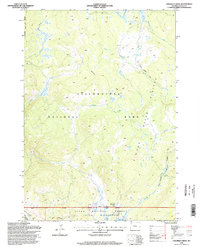
USGS Historical Quadrangle in GeoPDF.
Tags: 7.5 x 7.5 minute,
Crooked Creek,
Downloadable Data,
GeoPDF,
GeoTIFF, All tags...
Historical Topographic Maps,
Historical Topographic Maps 7.5 x 7.5 Minute Map Series,
Map,
WY,
imageryBaseMapsEarthCover, Fewer tags

Mineral-resources personnel from the Alaska Division of Geological & Geophysical Surveys carried out a geological field survey, including mapping and sampling northeast of Fairbanks in the Circle A-4, A-5, B-4, and B-5 quadrangles, Alaska from May 31 to June 28, 2007. The fieldwork provides basic information critical to building an understanding of Alaska geology and is part of an integrated program of airborne geophysical surveys followed by geological mapping. During 2007, 128 rock samples were collected for geochemical trace-element analysis, and 44 rock samples were collected for whole rock (major- and minor-oxide) analysis. Petrogenetically important trace-elements will be analyzed in a subsequent study to...
Tags: Alaska, State of,
Chatanika River,
Circle Quadrangle,
Crooked Creek,
Deep Creek, All tags...
Fairbanks North Star Borough,
Faith Creek,
Frozenfoot Creek,
Geochemistry,
Glacier Pup,
Harrington Fork Birch Creek,
Hope Creek,
Idaho Creek,
Major Oxides,
McManus Creek,
Montana Creek,
Polar Creek,
Pool Creek,
Ruby Creek,
Ryan, Mount,
STATEMAP Project,
Smith Creek,
Sourdough Camp,
Sourdough Creek,
Steese Highway,
Stream Sediments,
Tough Luck Creek,
Trace Metals,
geoscientificInformation, Fewer tags

This feature class describes areas used for subsistence harvesting of moose in 2009 by surveyed households in Crooked Creek, Alaska. This is a partial representation of areas used for resource harvesting in 2009.
Types: Downloadable;
Tags: BLM,
Bureau of Land Management,
Crooked Creek,
Cultural Resources,
DOI, All tags...
Disturbance,
Donlin Creek,
Geospatial,
Phase I,
REA,
Rapid Ecoregional Assessment,
Wildlife,
YKL 2011,
Yukon Kuskokwim,
economy,
harvest,
moose,
society,
subsistence, Fewer tags
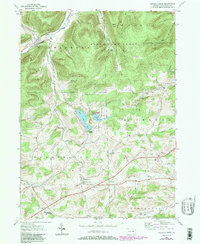
USGS Historical Quadrangle in GeoPDF.
Tags: 7.5 x 7.5 minute,
Crooked Creek,
Downloadable Data,
GeoPDF,
GeoTIFF, All tags...
Historical Topographic Maps,
Historical Topographic Maps 7.5 x 7.5 Minute Map Series,
Map,
PA,
imageryBaseMapsEarthCover, Fewer tags

This report provides detailed (1:63,360-scale) mapping of portions of U.S. Geological Survey Circle B-2 (1955), B-3 (1955), B-4 (1952), C-2 (1955), C-3 (1955), and C-4 (1952) quadrangles. The area is part of the Circle mining district and adjacent to the Fairbanks mining district. This report includes detailed geologic, structural, stratigraphic, and geochronologic data. Based on the resulting geologic maps, field investigations, and laboratory materials analyses, the project has also generated derivative maps of geologic construction materials and geologic hazards.
Tags: Aereal,
Aerial Photography,
Aeromagnetic Survey,
Age Dates,
Alaska, State of, All tags...
Alluvial Deposits,
Alluvium,
Amphibolite,
Ar-Ar,
Bedrock,
Bibliography,
Birch Creek,
C14,
Carbonates,
Circle Hot Springs,
Circle Mining District,
Circle Quadrangle,
Clastics,
Coal,
Colluvial Deposits,
Colluvium,
Conductivity Survey,
Conodonts,
Crooked Creek,
Electromagnetic Survey,
Fan,
Faulting,
Faults,
Fluvial,
Folding,
Fossils,
Geologic,
Geomorphology,
Glacial,
Glacial Deposits,
Glacial Drift,
Granite,
Hornblende,
Hornfels,
Igneous Rocks,
K-Ar,
Magnetite,
Major Oxides,
Mammoth Creek,
Mastodon Dome,
Metamorphic Grade,
Metamorphic Minerals,
Metamorphism,
Mineralogy,
Modal Analysis,
Petrography,
Plutonic,
Plutonic Hosted,
Porphyry,
Precious Metals,
Quartz,
Regional,
Regional Metamorphism,
Sample Location,
Sandstone,
Schist,
Sedimentary,
Structure,
Surficial,
Tectonics,
Terranes,
geoscientificInformation, Fewer tags
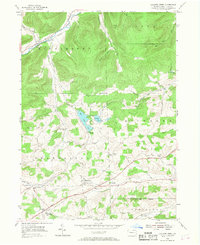
USGS Historical Quadrangle in GeoPDF.
Tags: 7.5 x 7.5 minute,
Crooked Creek,
Downloadable Data,
GeoPDF,
GeoTIFF, All tags...
Historical Topographic Maps,
Historical Topographic Maps 7.5 x 7.5 Minute Map Series,
Map,
PA,
imageryBaseMapsEarthCover, Fewer tags
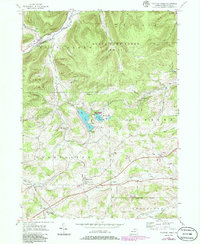
USGS Historical Quadrangle in GeoPDF.
Tags: 7.5 x 7.5 minute,
Crooked Creek,
Downloadable Data,
GeoPDF,
GeoTIFF, All tags...
Historical Topographic Maps,
Historical Topographic Maps 7.5 x 7.5 Minute Map Series,
Map,
PA,
imageryBaseMapsEarthCover, Fewer tags
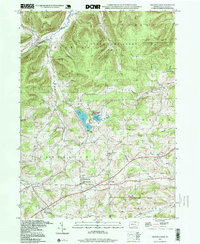
USGS Historical Quadrangle in GeoPDF.
Tags: 7.5 x 7.5 minute,
Crooked Creek,
Downloadable Data,
GeoPDF,
GeoTIFF, All tags...
Historical Topographic Maps,
Historical Topographic Maps 7.5 x 7.5 Minute Map Series,
Map,
PA,
imageryBaseMapsEarthCover, Fewer tags

This feature class describes areas used for subsistence harvesting of sheefish in 2009 by surveyed households in Crooked Creek, Alaska. This is a partial representation of areas used for resource harvesting in 2009.
Types: Downloadable;
Tags: BLM,
Bureau of Land Management,
Crooked Creek,
Cultural Resources,
DOI, All tags...
Disturbance,
Donlin Creek,
Geospatial,
Phase I,
REA,
Rapid Ecoregional Assessment,
Wildlife,
YKL 2011,
Yukon Kuskokwim,
economy,
harvest,
sheefish,
society,
subsistence, Fewer tags
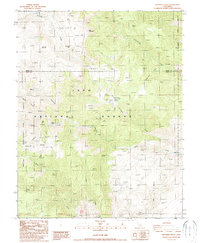
USGS Historical Quadrangle in GeoPDF.
Tags: 7.5 x 7.5 minute,
CA,
Crooked Creek,
Downloadable Data,
GeoPDF, All tags...
GeoTIFF,
Historical Topographic Maps,
Historical Topographic Maps 7.5 x 7.5 Minute Map Series,
Map,
Provisional,
imageryBaseMapsEarthCover, Fewer tags

This feature class describes areas used for subsistence harvesting of northern pike in 2009 by surveyed households in Crooked Creek, Alaska. This is a partial representation of areas used for resource harvesting in 2009.
Types: Downloadable;
Tags: BLM,
Bureau of Land Management,
Crooked Creek,
Cultural Resources,
DOI, All tags...
Disturbance,
Donlin Creek,
Geospatial,
Phase I,
REA,
Rapid Ecoregional Assessment,
Wildlife,
YKL 2011,
Yukon Kuskokwim,
economy,
harvest,
northern pike,
society,
subsistence, Fewer tags
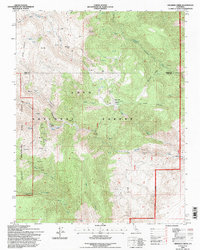
USGS Historical Quadrangle in GeoPDF.
Tags: 7.5 x 7.5 minute,
CA,
Crooked Creek,
Downloadable Data,
GeoPDF, All tags...
GeoTIFF,
Historical Topographic Maps,
Historical Topographic Maps 7.5 x 7.5 Minute Map Series,
Map,
imageryBaseMapsEarthCover, Fewer tags
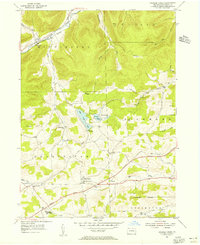
USGS Historical Quadrangle in GeoPDF.
Tags: 7.5 x 7.5 minute,
Crooked Creek,
Downloadable Data,
GeoPDF,
GeoTIFF, All tags...
Historical Topographic Maps,
Historical Topographic Maps 7.5 x 7.5 Minute Map Series,
Map,
PA,
imageryBaseMapsEarthCover, Fewer tags
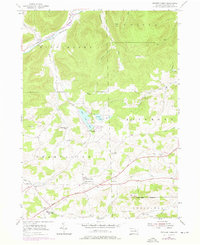
USGS Historical Quadrangle in GeoPDF.
Tags: 7.5 x 7.5 minute,
Crooked Creek,
Downloadable Data,
GeoPDF,
GeoTIFF, All tags...
Historical Topographic Maps,
Historical Topographic Maps 7.5 x 7.5 Minute Map Series,
Map,
PA,
imageryBaseMapsEarthCover, Fewer tags
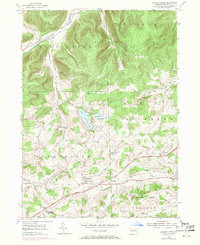
USGS Historical Quadrangle in GeoPDF.
Tags: 7.5 x 7.5 minute,
Crooked Creek,
Downloadable Data,
GeoPDF,
GeoTIFF, All tags...
Historical Topographic Maps,
Historical Topographic Maps 7.5 x 7.5 Minute Map Series,
Map,
PA,
imageryBaseMapsEarthCover, Fewer tags

The 1:100,000-scale geologic map database of the South Boston 30' × 60' quadrangle, Virginia and North Carolina, provides geologic information for the Piedmont along the I-85 and U.S. Route 58 corridors and in the Roanoke River watershed, which includes the John H. Kerr Reservoir and Lake Gaston. The Raleigh terrane (located on the eastern side of the map) contains Neoproterozoic to early Paleozoic(?) polydeformed, amphibolite-facies gneisses and schists. The Carolina slate belt of the Carolina terrane (located in the central part of the map) contains Neoproterozoic metavolcanic and metasedimentary rocks at greenschist facies. Although locally complicated, the slate-belt structure mapped across the South Boston...
Tags: 30 x 60 minute,
Aaron Formation,
Aarons Creek,
Alkaline basalt,
Allen Creek, All tags...
Alluvium,
Amphibolite,
Argillite,
Armistead Branch,
Ashcake Creek,
Augen gneiss,
Averett,
Bagleys Mills,
Banister Lake,
Banister River,
Barnes Junction,
Basalt,
Baskerville,
Bears Element Creek,
Beaver Pond,
Beaver Pond Creek,
Beech Creek,
Bethel Hill,
Big Hounds Creek,
Big Juniper Creek,
Biotite gneiss,
Birch Creek,
Bishops Corner,
Black Walnut Creek,
Blackridge,
Blackstone Creek,
Blanes Millpond,
Bluestone Creek,
Bluestone Otter Creek,
Bluewing Creek,
Bowes Branch,
Boydton,
Bracey,
Brodnax,
Brunswick County,
Buckham Creek,
Buckhorn Creek,
Buckskin Creek,
Buffalo Creek,
Buffalo Junction,
Buffalo Springs,
Buggs Island,
Burton Branch,
Butcher Creek,
Cambrian,
Cargills Creek,
Carolina slate belt,
Carolina terrane,
Castle Creek,
Castle Heights,
Cataclasite,
Catawba Creek,
Cedar Creek,
Cenozoic,
Charlotte County,
Chase City,
Christie,
Clarksville,
Clarkton,
Clays Mill,
Clover,
Clover Creek,
Cluster Springs,
Coleman Creek,
Colluvium,
Conglomerate,
Connor Lake,
Cotton Creek,
Couches Creek,
Country Line complex,
Cox Creek,
Crooked Creek,
Crupper Run,
Crystal Hill,
Cub Creek,
Cunningham complex,
Dacite,
Dan River,
Devils Branch,
Devonian,
Diabase,
Difficult Creek,
Diorite,
Dixon Millpond,
Dockery Creek,
Drakes Branch,
Dryburg,
Dudley,
Dundas,
Ellis Creek,
Esnon,
Evans Creek,
Farmers Branch,
Felsic gneiss,
Finchley,
Finnewood Creek,
Finneywood,
Flat Creek,
Flat Rock Creek,
Forksville,
Formosa,
Fort Mitchell,
Gabbro,
Gibson Creek,
Gilliams Branch,
Gneiss,
Goodell Creek,
Granite,
Granitic gneiss,
Granodiorite,
Granville County,
Grassy Creek,
Great Creek,
Greenschist,
Gregory Corner,
Hagood Creek,
Halifax,
Halifax County,
Harmony,
Hawtree Creek,
Hitesburg,
Holocene,
Horsepen Creek,
Horseshoe Lake,
Hughs Lake,
Hunting Creek,
Hyco Formation,
Hyco River,
Island Creek,
Island Creek Reservoir,
Jeffress,
Johnson Creek,
Jurassic,
Kenbridge,
Kerr Reservoir,
Kettle Creek,
Kettlesticks Creek,
Kits Creek,
La Crosse,
Lake Gaston,
Lake Gordon,
Langford Pond,
Lawsons Creek,
Layton Creek,
Lennig,
Little Genito Creek,
Little Horsepen Creek,
Little Johnson Creek,
Little Juniper Creek,
Little Temble Creek,
Long Branch,
Lunenburg,
Lunenburg County,
Lyle Creek,
Marengo,
Mason Creek,
Mayo,
Mayo Creek,
Mayo Reservoir,
Mecklenburg County,
Mesozoic,
Metabasalt,
Metamorphic rock,
Metamorphic suite of South Hill,
Metasedimentary rock,
Metavolcanic rock,
Middle Meherrin River,
Mikes Creek,
Miles Creek,
Mill Branch,
Milton terrane,
Mines Creek,
Miocene,
Miry Creek,
Mississippian,
Mitchell Creek,
Monzodiorite,
Monzonite,
Moody Creek,
Mossingford,
Mount Laurel,
Mountain Creek,
Mylonite,
Nathalie,
Nelson,
Neogene,
Neoproterozoic,
North Carolina,
North Meherrin River,
North View,
Nutbush Creek,
Nutbush Creek mylonite zone,
Omega,
Ontario,
Ordovician,
Orthogneiss,
Otter Creek,
Paleozoic,
Palmer Crossroads,
Palmer Springs,
Panhandle Creek,
Parham Creek,
Pennsylvanian,
Permian,
Person County,
Peter Creek,
Philbeck Crossroads,
Phyllonite,
Piney Creek,
Piney Grove,
Plantersville,
Pleistocene,
Pliocene,
Poplar Creek,
Public Fork,
Quartz diorite,
Quartz monzonite,
Quartzite,
Quaternary,
Rabat,
Raleigh terrane,
Randolph,
Ready Creek,
Red Bank,
Red Oak,
Redlawn,
Reedy Creek,
Reeses Creek,
Rehoboth,
Reynolds Creek,
Rhyolite,
Riverdale,
Roanoke Creek,
Roanoke River,
Rocky Branch,
Sand,
Sandy Creek,
Saxe,
Schist,
Scotts Crossroad,
Scottsburg,
Seay Creek,
Shiny Rock,
Siddon,
Siltstone,
Silurian,
Sinai,
Skipwith,
Smith Creek,
South Boston,
South Hill,
South Meherrin River,
Spanish Grove,
Stokes Creek,
Stony Creek,
Taylors Creek,
Temble Creek,
Terrace,
The Ridge,
Tonalite,
Triassic,
Tungsten,
Twittys Creek,
USGS Science Data Catalog (SDC),
Union Level,
Vance County,
Vance pluton,
Victoria,
Virgilina,
Virgilina Formation,
Virginia,
Wallace Branch,
Warren County,
Wightman,
Winn Creek,
Wolf Trap Creek,
Wylliesburg,
abandoned mines and quarries,
bedrock geologic units,
copper,
earth sciences,
folding (geologic),
foliation (geologic),
fracture (geologic),
geologic contacts,
geologic maps,
geologic processes,
geologic structure,
geologic time periods,
geologic time scales,
geology,
geoscientificInformation,
geospatial datasets,
information product types,
inlandWaters,
lithology,
maps and atlases,
metamorphic rocks,
metamorphism (geological),
mining and quarrying,
place,
sedimentary rocks,
sedimentation,
society,
stratum,
structural geology,
structure,
surficial geologic units,
unconsolidated deposits,
utilitiesCommunication, Fewer tags

This feature class describes areas used for subsistence harvesting of salmon in 2009 by surveyed households in Crooked Creek, Alaska. This is a partial representation of areas used for resource harvesting in 2009.
Types: Downloadable;
Tags: BLM,
Bureau of Land Management,
Crooked Creek,
Cultural Resources,
DOI, All tags...
Disturbance,
Donlin Creek,
Geospatial,
Phase I,
REA,
Rapid Ecoregional Assessment,
Wildlife,
YKL 2011,
Yukon Kuskokwim,
economy,
harvest,
salmon,
society,
subsistence, Fewer tags
|